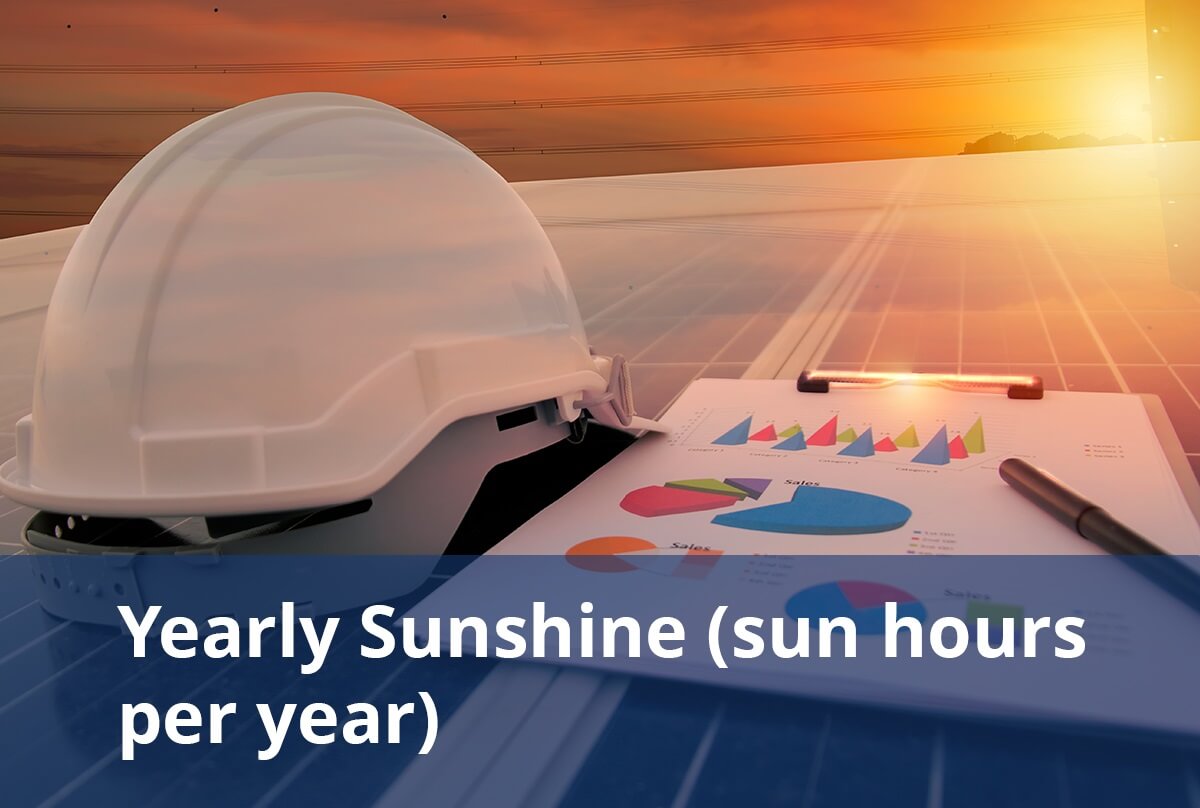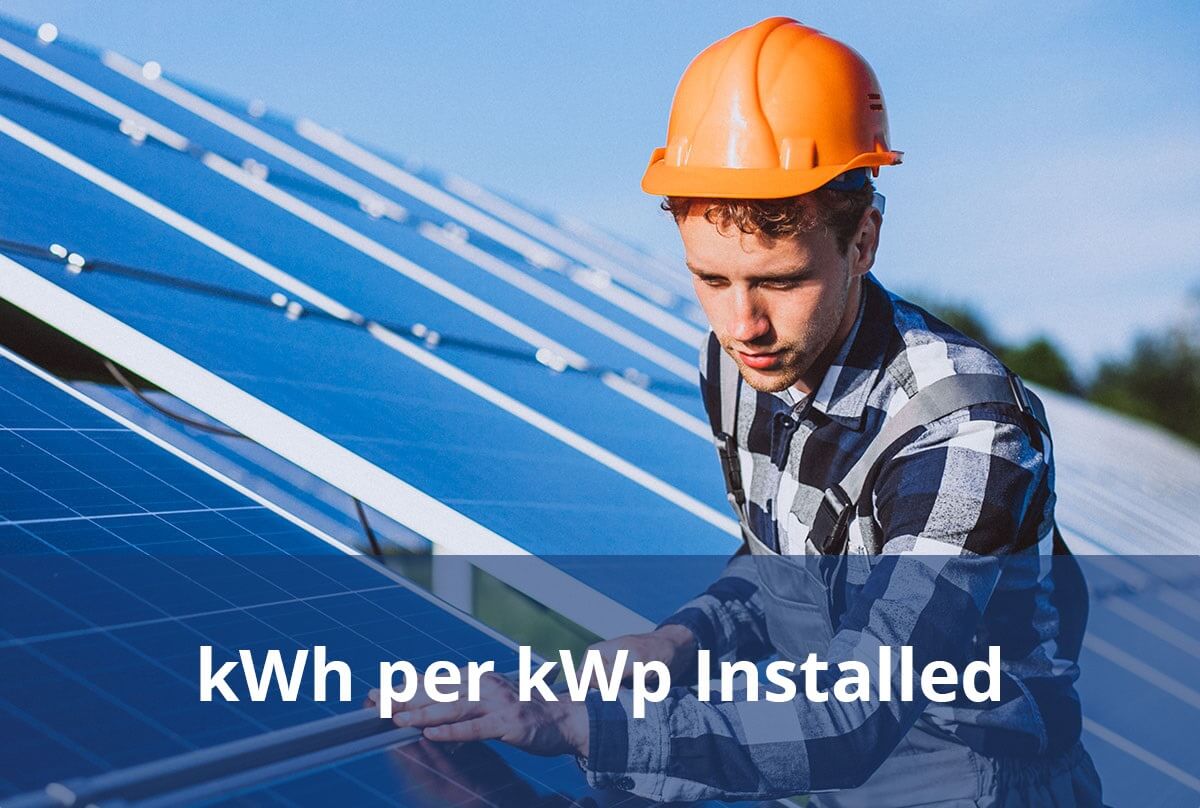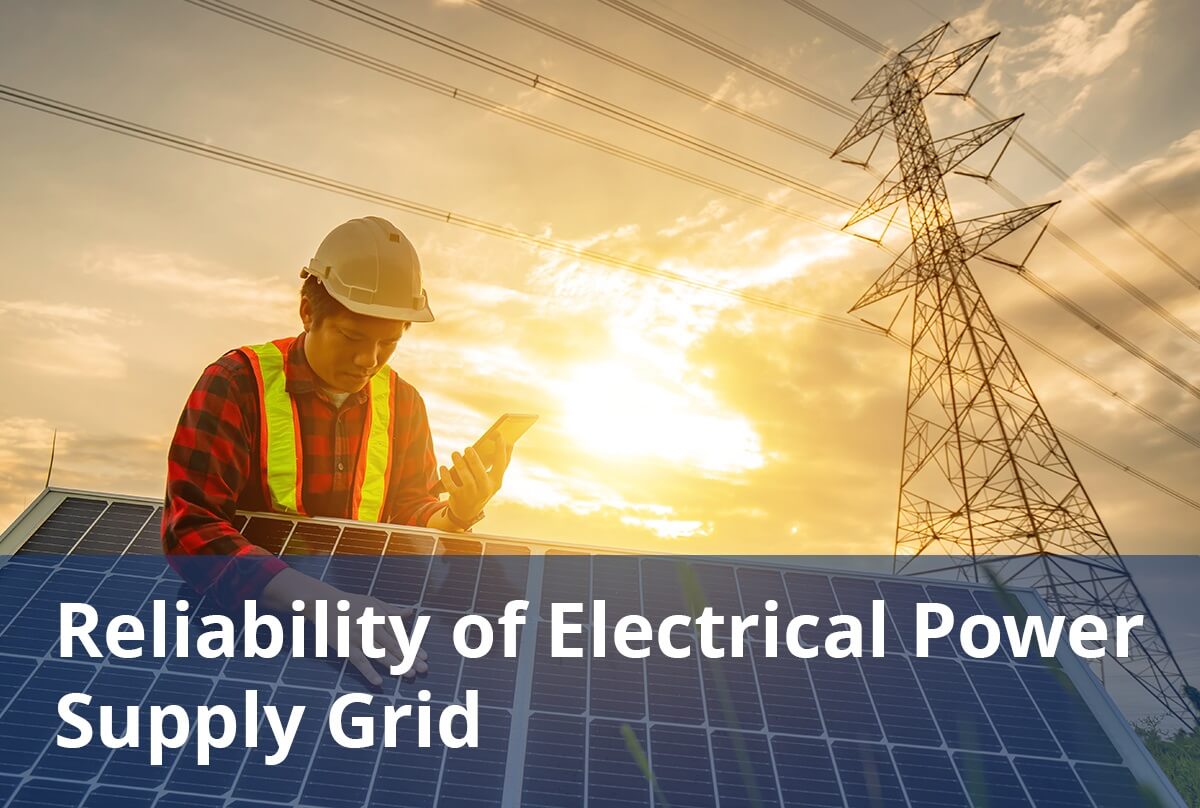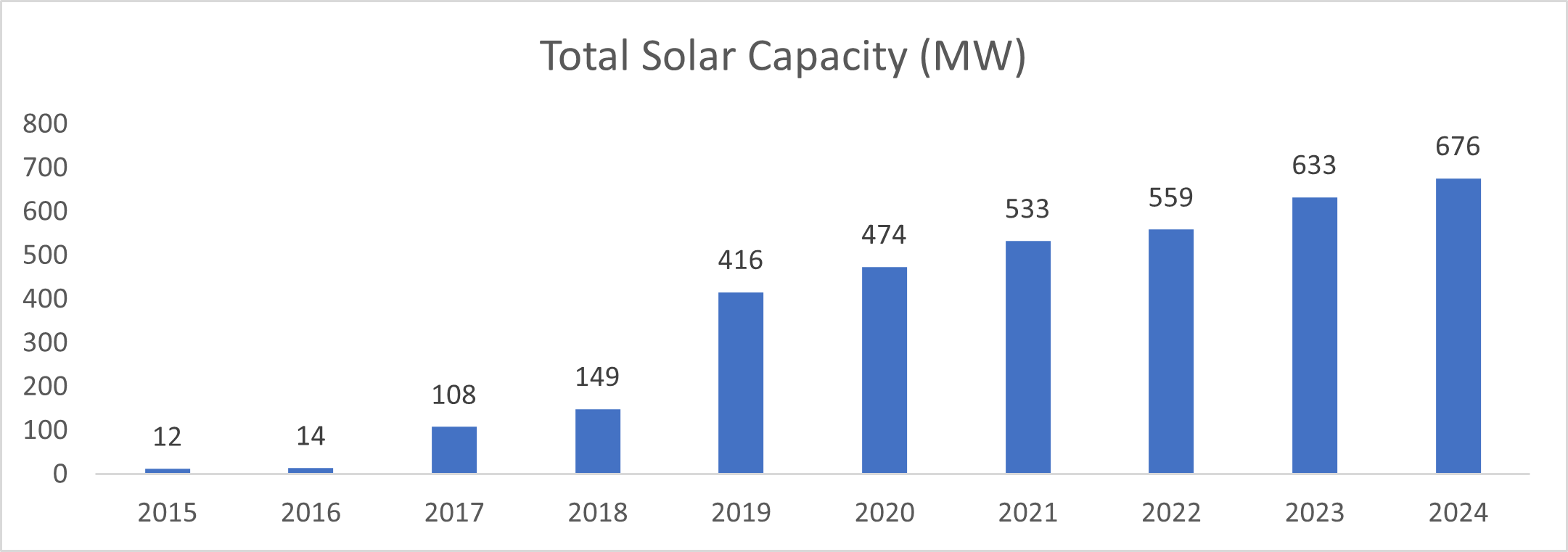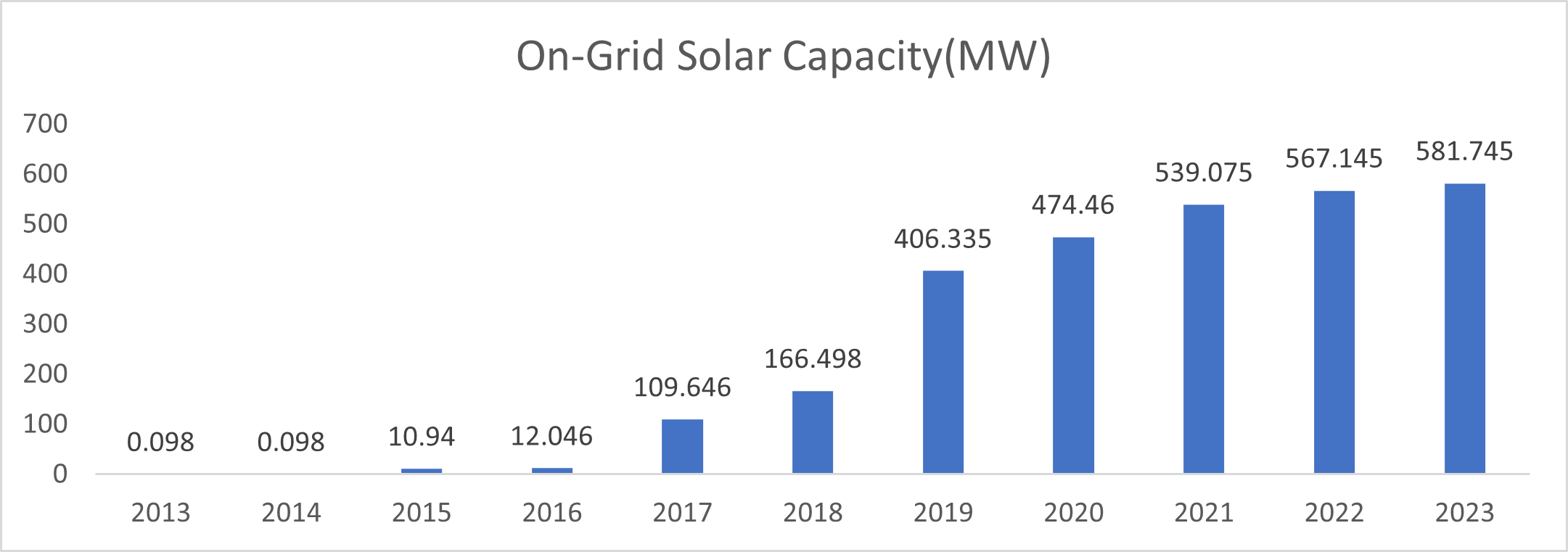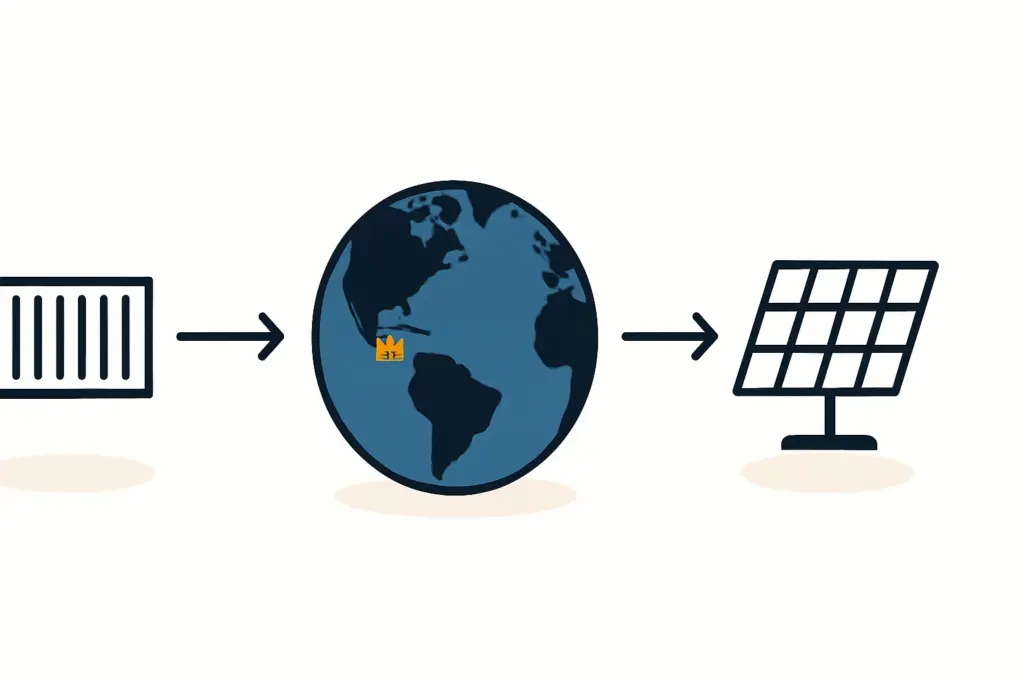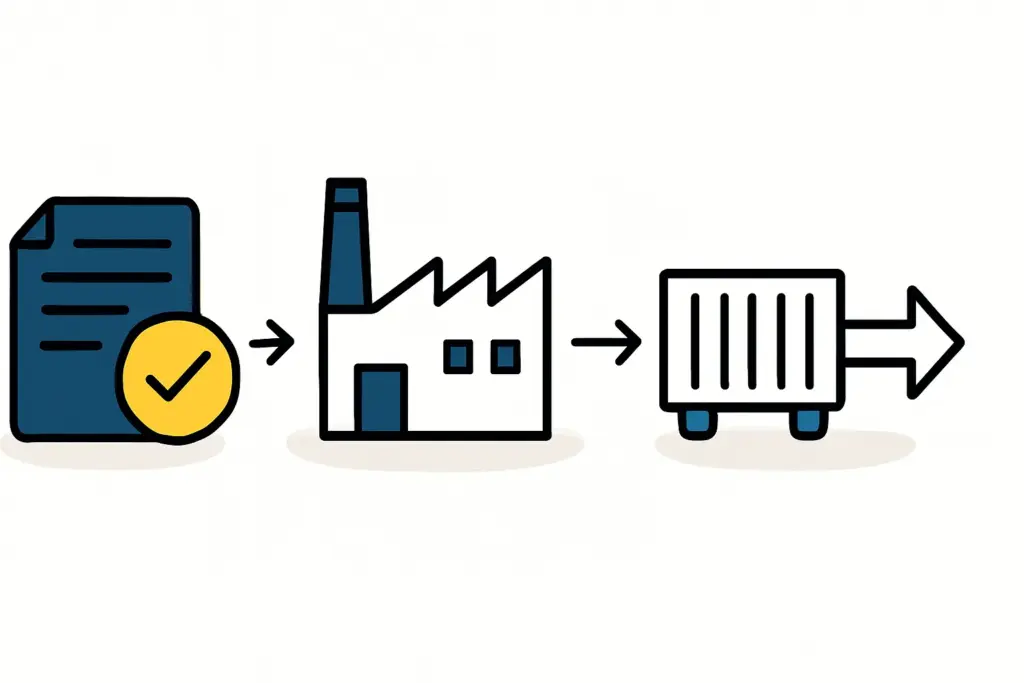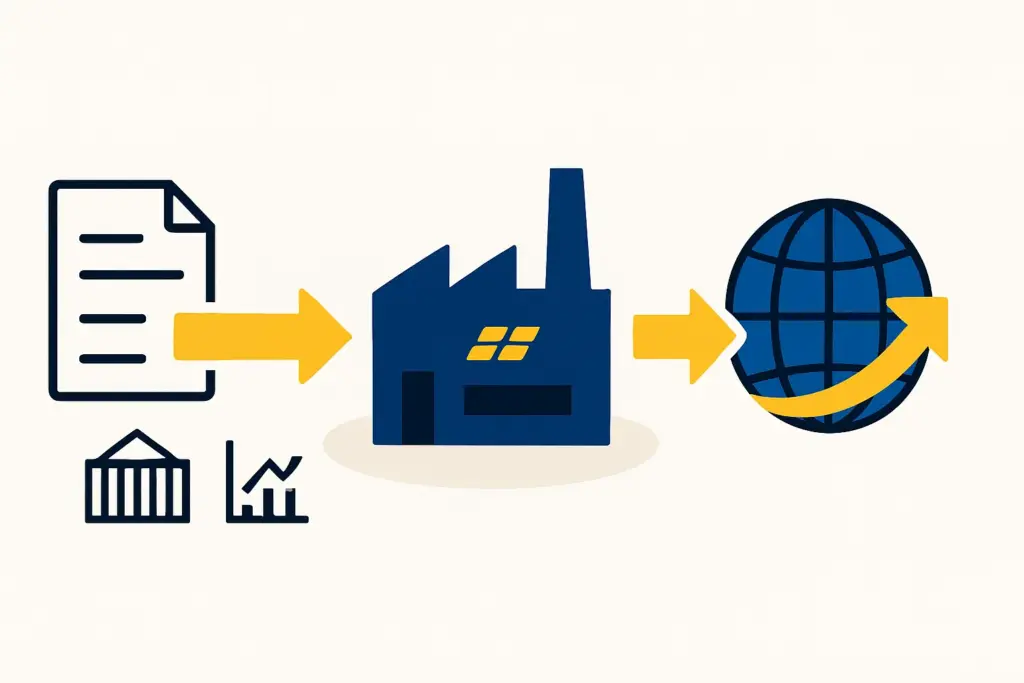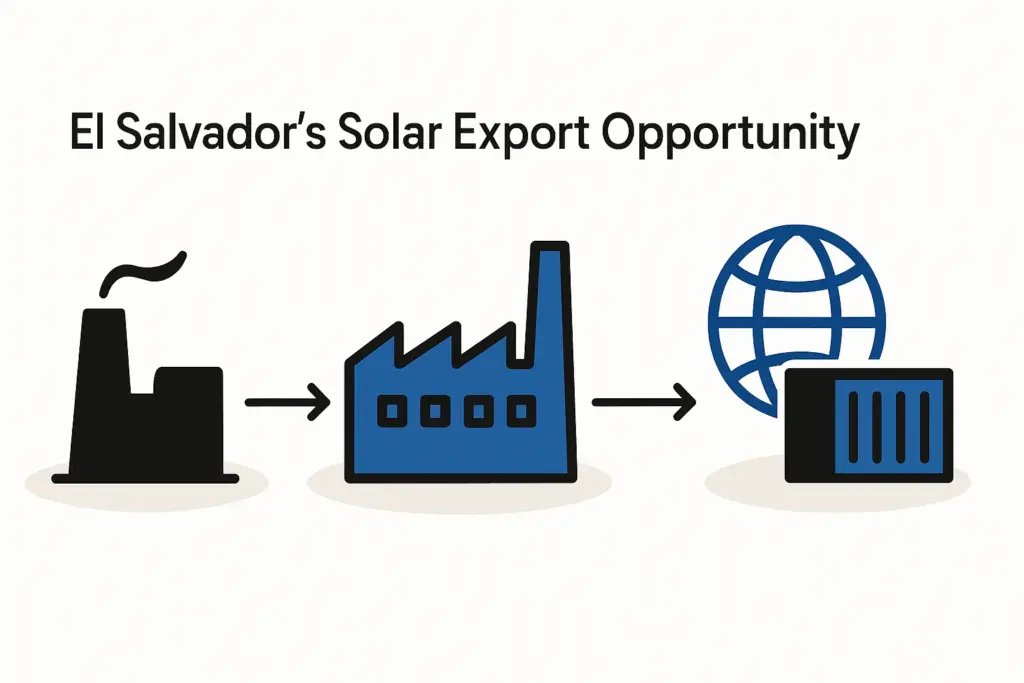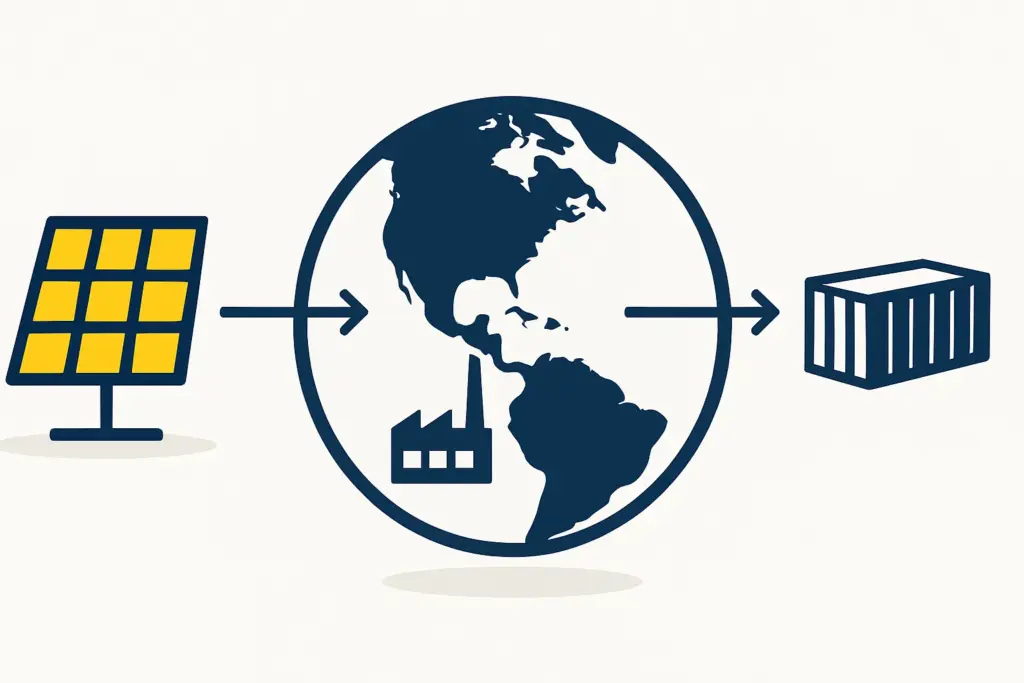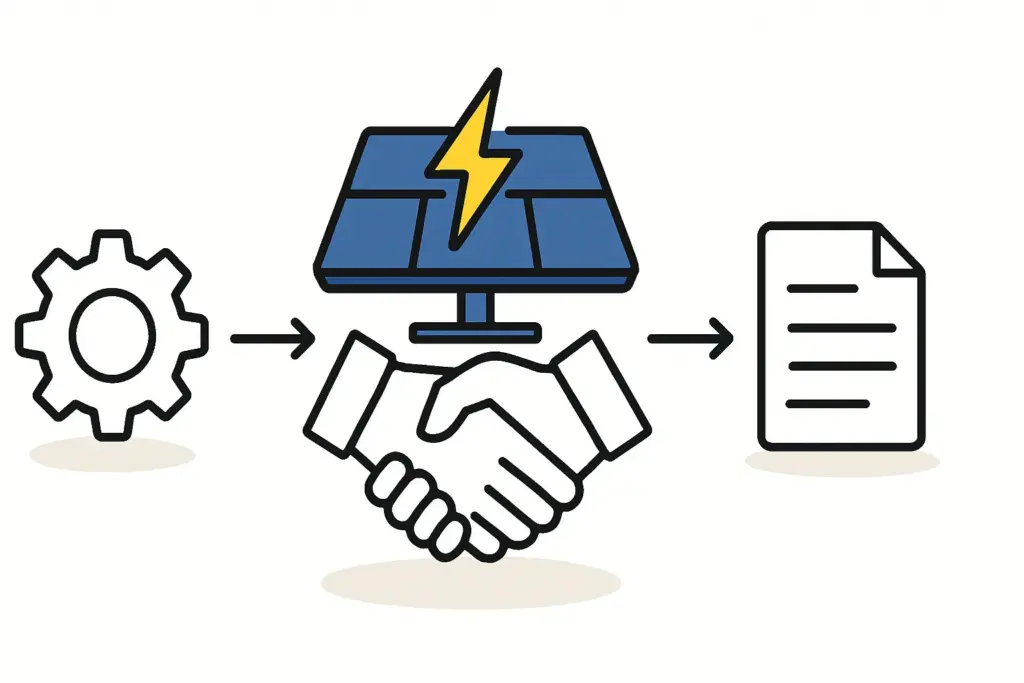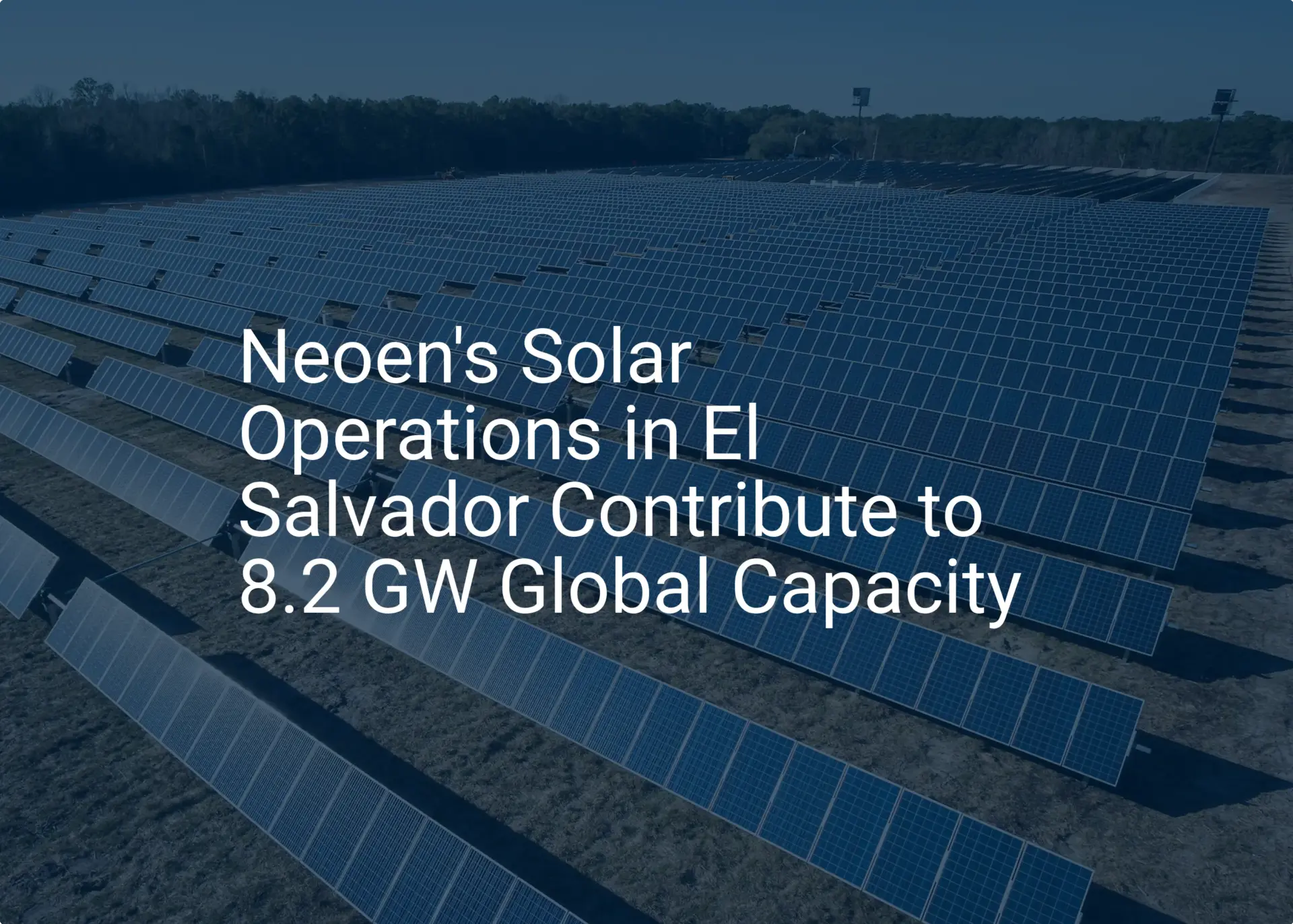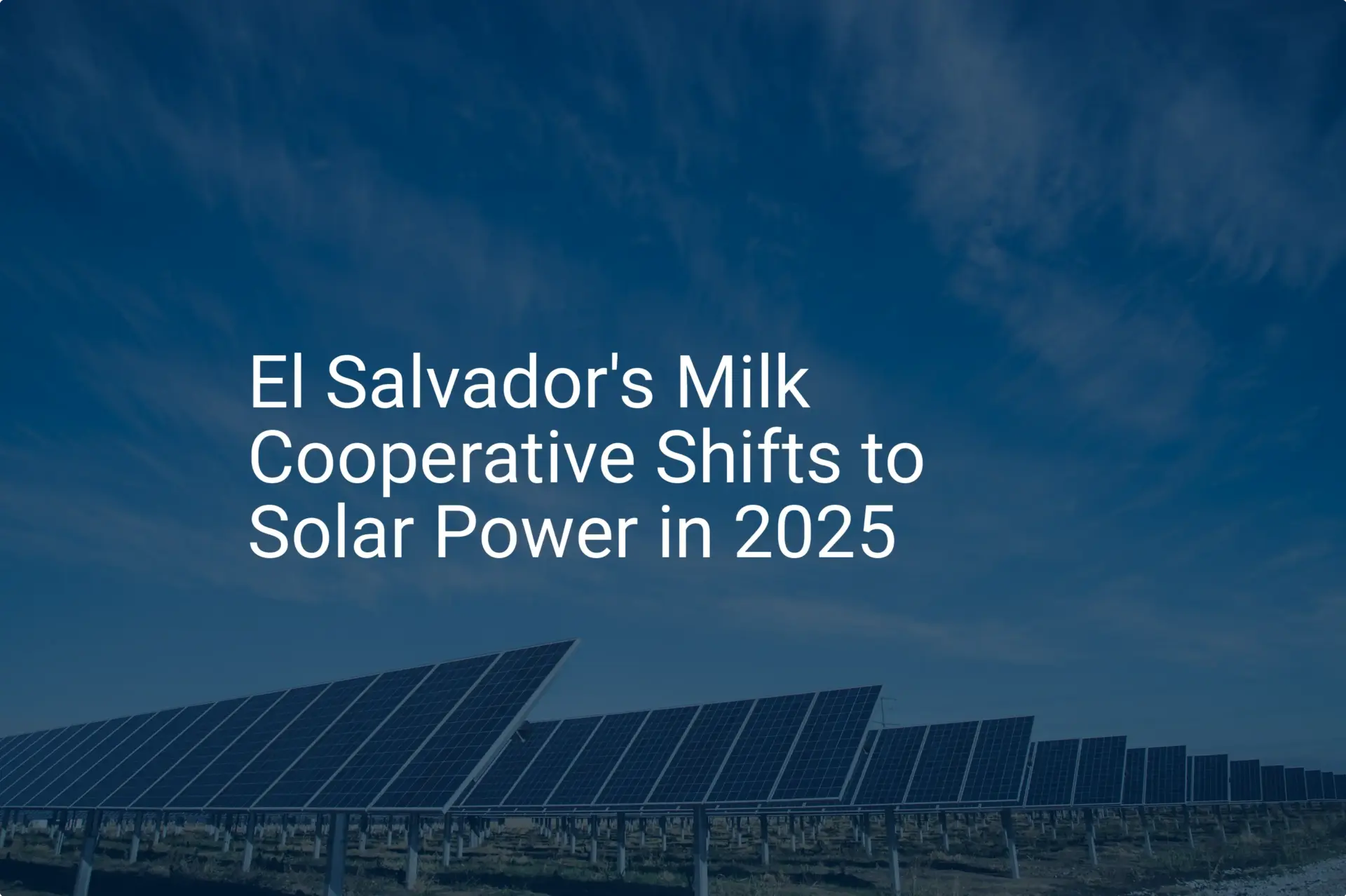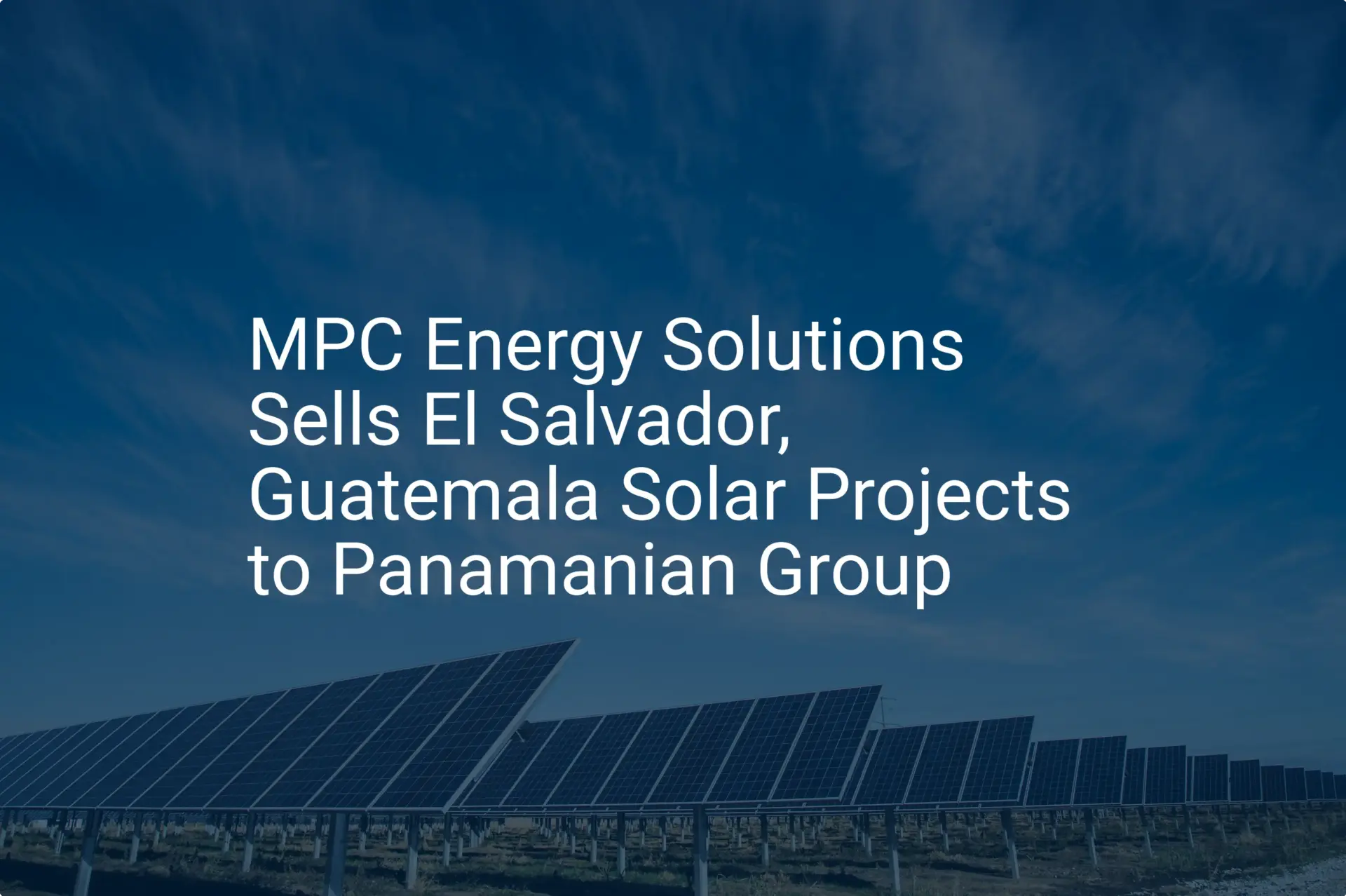Gain comprehensive insights into the statistics and metrics surrounding the solar production industry in El Savador
- World Data, (January 2025), The climate in El Salvador, Retrieved on 21 January 2025 from https://www.worlddata.info/america/el-salvador/climate.php.
- Climateknowledgeportal, (2023), El Salvador Current Climate, Retrieved on 21 January 2025 from https://climateknowledgeportal.worldbank.org/country/el-salvador/climate-data-historical.
- SolarGIS, (2021), Solar Resource Map Of El Salvador, Retrieved on 20 January 2025 from https://solargis.com/resources/free-maps-and-gis-data?locality=el-salvador.
- /GlobalPetrolPrices, (June 2024), El Salvador Electricity Prices, retrieved on 22 January 2025 from https://www.globalpetrolprices.com/El-Salvador/electricity_prices/.
- IADB, (2023), IDB Backs Program for Universal Access to Electricity in El Salvador, Retrieved on 24 January 2025 from https://www.iadb.org/en/news/idb-backs-program-universal-access-electricity-el-salvador.
- DoingBusiness, (2020), Doing Business in El Salvador, Retrieved on 24 January 2025 from https://www.doingbusiness.org/content/dam/doingBusiness/country/e/el-salvador/SLV.pdf.
- SIGET, (2024), Dynamic Electrical Statistics Viewer, Retrieved on 21 January 2025 from https://www.siget.gob.sv/gerencias/electricidad/informe-de-mercado-y-estadisticas-electricas/estadisticas-electricas-bi/.
- IRENA, (July 2024), Investment opportunities for utility-scale solar and wind areas: El Salvador, Retrieved on 23 January 2025 from https://www.irena.org/Publications/2024/May/Investment-opportunities-for-utility-scale-solar-and-wind-areas-El-Salvador.
- LatamReports, (May 2024),El Salvador has capacity to install over 1,200 megawatts of renewable energy, Retrieved on 23 January 2025 from https://latamreports.com/es/el-salvador-has-capacity-to-install-over-1200-megawatts-of-renewable-energy/.
- Interruptionesaesalvador, (2025), Interruptions AES El Salvador Retrieved on 25 January 2025 from https://interrupcionesaeselsalvador.com/.
- InvestinElSalvador, (October 2024), Bukele’s government has granted permits for 21 solar plants in El Salvador., Retrieved on 21 January 2025 from https://investinelsalvador.gob.sv/bukeles-government-has-granted-permits-for-21-solar-plants-in-el-salvador/.
- IRENA, (July 2024), RENEWABLE ENERGY STATISTICS 2024, Retrieved on 21 January 2025 from https://www.irena.org/Publications/2024/Jul/Renewable-energy-statistics-2024.
- WorldSalaries, (January 2025), Average Solar Engineer Salary in El Salvador for 2025, Retrieved on 24 January 2025 from https://worldsalaries.com/average-solar-engineer-salary-in-el-salvador/.
- WorldSalaries, (January 2025), Average Solar Photovoltaic Installer Salary in El Salvador for 2025, Retrieved on 24 January 2025 from https://worldsalaries.com/average-solar-photovoltaic-installer-salary-in-el-salvador/.
- Worldometer, (January 2025), El Salvador Population, Retrieved on 20 January 2025 from https://www.worldometers.info/world-population/el-salvador-population/.
- Encuentra24, (2025), Commercial and Industrial Properties for rent in El Salvador, Retrieved on 26 January 2025 from https://www.encuentra24.com/el-salvador-en/real-estate-for-rent-comercial.
- AES, (January 2025),Current Rates, Retrieved on 26 January 2025 from https://www.aes-elsalvador.com/en/current-fees.
- Invest in Salvador, (2024), Basic services price Retrieved on 24 January 2025 from https://investinelsalvador.gob.sv/basic-services-price/.
- Encuentra24, (2025), El Salvador offices for rent in San Salvador, Retrieved on 26 January 2025 from https://www.encuentra24.com/el-salvador-en/real-estate-for-rent-offices/san-salvador.
- Statista, (September 2024), Insurances El Salvador, Retrieved on 25 January 2025 from https://www.statista.com/outlook/fmo/insurances/el-salvador.
- SIGET, (2024), BOLETIN-ESTADISTICAS-ELECTRICAS-ANO-2023, Retrieved on 25 January 2025 from https://www.siget.gob.sv/download/boletin-estadisticas-electricas-ano-2023/?wpdmdl=8919&refresh=678fc1b784c751737474487.
- Ourworldindata, (2024), El Salvador: Energy Country Profile Retrieved on 24 January 2025 from https://ourworldindata.org/energy/country/el-salvador.
- Invest in Salvador, (2024), Energy Sector Guide 2023, Retrieved on 24 January 2025 from https://investinelsalvador.gob.sv/wp-content/uploads/2023/12/Energy-Sector-Guide-2023-1.pdf.
- WikiPedia, (January 2025), Electricity Sector in Elsalvador, Retrieved on 24 January 2025 from https://en.wikipedia.org/wiki/Electricity_sector_in_El_Salvador.
- AES, (nd), Distribution System AES El Salvador, Retrieved on 22 January 2025 from https://www.aes-elsalvador.com/en/distribution.
- ETESAL, (2024), The El Salvador Transmitter Company (ETESAL), Retrieved on 22 January 2025 from https://www.etesal.com.sv/.
- ETESAL, (2024), ETESAL transmission system, Retrieved on 22 January 2025 from https://www.etesal.com.sv/sistema-de-transmision-etesal/.
- OpenInframap, (2023), All 60 power plants in El Salvador, Retrieved on 26 January 2025 from https://openinframap.org/stats/area/El%20Salvador/plants.
- GEM.Wiki, (nd), Oil & Gas power stations in El Salvador, Retrieved on 26 January 2025 from https://www.gem.wiki/Category:Oil_%26_Gas_power_stations_in_El_Salvador.
- GEM.Wiki, (May 2024), Ventus Wind Project, Retrieved on 26 January 2025 from https://www.gem.wiki/Ventus_Wind_Project.
- GEM.Wiki, (nd), Geothermal Power Plants in El Salvador Retrieved on 26 January 2025 from https://www.gem.wiki/Category:Geothermal_power_plants_in_El_Salvador.
- GEM.Wiki, (nd),Hydroelectric power plants in El Salvador, Retrieved on 26 January 2025 from https://www.gem.wiki/Category:Hydroelectric_power_plants_in_El_Salvador.
- PowerTechnology, (February 2024), Power plant profile: El Chaparral, El Salvador, Retrieved on 26 January 2025 from https://www.power-technology.com/data-insights/power-plant-profile-el-chaparral-el-salvador/.
- OpenInframap, (nd), Central Hidroelectrica Guajoyo, Retrieved on 26 January 2025 from https://openinframap.org/stats/area/El%20Salvador/plants/-8013853.
- Sinovoltaics, (nd), IEC certifications, Retrieved on 26 January 2025 from https://sinovoltaics.com/learning-center/certifications/iec-certifications/.
- Invest in Salvador, (October 2024),Bukele’s government has granted permits for 21 solar plants in El Salvador. Retrieved on 26 January 2025 from https://investinelsalvador.gob.sv/bukeles-government-has-granted-permits-for-21-solar-plants-in-el-salvador/.
- GEM.Wiki, (June 2024), Capella Solar Park, Retrieved on 26 January 2025 from https://www.gem.wiki/Capella_Solar_Park.
- Power Technology, (October 2024),Providencia Solar PV Park, El Salvador, Retrieved on 26 January 2025 from https://www.power-technology.com/data-insights/power-plant-profile-providencia-solar-pv-park-el-salvador/.
- AES, (nd), Bosforo, Retrieved on 26 January 2025 from https://www.aes-elsalvador.com/en/bosforo.
- INE , (December 2023),Inauguramos Talnique Solar la primera planta solar fotovoltaica del Estado salvadoreño, Retrieved on 26 January 2025 from https://www.ine.com.sv/2024/01/04/inaugurada-talnique-solar-primera-planta-solar-fotovoltaica-del-estado-salvado/.
- AES, (nd), Opico Power Plant , Retrieved on 26 January 2025 from https://www.aes-elsalvador.com/en/opico-power-plant.
- 42. Power__Technology, (Novemberr 2024)Power plant profile: 15 de Septiembre Solar PV Park, El Salvador, Retrieved on 26 January 2025 from https://www.power-technology.com/marketdata/power-plant-profile-15-de-septiembre-solar-pv-park-el-salvador-2/.
- GEM.Wiki, (May 2024)Agrisal Edecsa solar farm , Retrieved on 26 January 2025 from https://www.gem.wiki/Agrisal_Edecsa_solar_farm.
- Dinero, (October 2024), 21 solar plants approved in El Salvador, invest US$152.6 million, Retrieved on 26 January 2025 from https://dinero.com.sv/economia/21-plantas-solares-aprobadas-en-el-salvador-invierten-us152-6-millones/.

